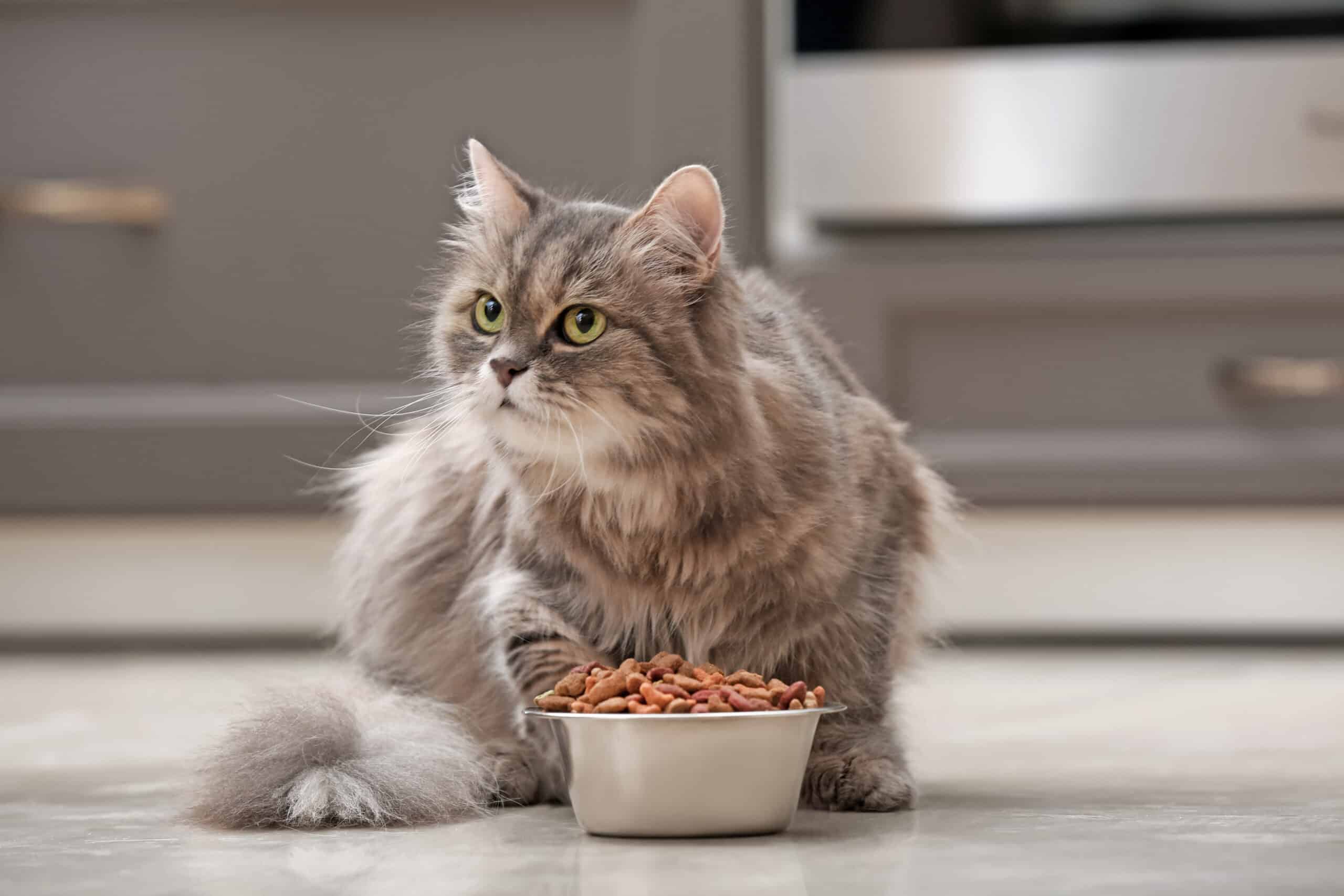Understanding Your Cat's Nutritional Needs
Cats are obligate carnivores, meaning they require specific nutrients primarily found in animal products.
Essential Nutrients for Cats
-
Protein: Critical for growth and maintenance; should come from high-quality animal sources.
-
Taurine: An amino acid vital for heart and eye health.
-
Fats: Necessary for energy and absorption of fat-soluble vitamins.
-
Vitamins and Minerals: Including vitamins A, D, E, and minerals like calcium and phosphorus.
Factors Influencing Dietary Needs
-
Age: Kittens, adults, and senior cats have different nutritional requirements.
-
Health Conditions: Conditions like kidney disease or obesity may require specialized diets.
-
Activity Level: More active cats may need higher calorie intake.
Types of Cat Food
Different types of cat food cater to varying needs and preferences.
Dry Cat Food
-
Convenience: Easy to store and serve.
-
Dental Health: May help reduce tartar buildup.
-
Considerations: Ensure adequate water intake, as dry food lacks moisture.
Wet Cat Food
-
Hydration: High moisture content aids in hydration.
-
Palatability: Often more appealing to picky eaters.
-
Storage: Requires refrigeration after opening.
Raw Cat Food
-
Natural Diet: Mimics what cats would eat in the wild.
-
Preparation: Requires careful handling to avoid contamination.
-
Balanced Nutrition: Must be well-formulated to ensure all nutrient needs are met.
Grain-Free Cat Food
-
Digestibility: Some cats may have sensitivities to grains.
-
Protein Sources: Often includes higher meat content.
-
Cost: Typically more expensive than conventional options.
Price vs. Nutritional Value
|
Type of Cat Food
|
Average Cost
|
Nutritional Value
|
Moisture Content
|
|---|---|---|---|
|
Dry
|
$1.50/lb
|
Balanced, low moisture
|
10%
|
|
Wet
|
$2.00-3.00/can
|
High protein, high moisture
|
75%
|
|
Raw
|
$4.00/lb
|
High protein, variable moisture
|
60-70%
|
|
Grain-Free
|
$3.00/lb
|
High protein, varied moisture
|
10-75%
|
Choosing the Best Cat Food
Selecting the right food involves considering several factors:
Quality Ingredients
-
Meat as Main Ingredient: Look for foods where meat is the first ingredient.
-
Limited Fillers: Avoid foods with excessive grains or fillers.
Brand Reputation
-
Research: Choose brands with a history of quality and safety.
-
Recalls: Check for any past recalls or safety issues.
Special Dietary Needs
-
Prescription Diets: Available for specific health issues like urinary tract health or weight management.
-
Life Stage Formulas: Tailored to meet the needs of kittens, adults, or senior cats.
FAQs
-
What is the best type of cat food?
It depends on your cat’s specific needs and preferences. Consult with a veterinarian to determine the most suitable option.
-
How often should I feed my cat?
Adult cats typically eat twice a day, while kittens may require more frequent meals.
-
Is grain-free food better for my cat?
It can be beneficial for cats with grain sensitivities, but is not necessary for all cats.
-
Can I mix wet and dry food?
Yes, mixing can provide balanced nutrition and hydration.
-
How do I transition my cat to a new food?
Gradually mix the new food with the old over a week to prevent digestive upset.

